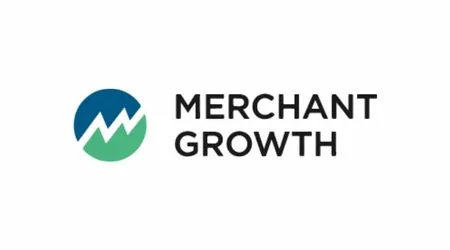Promoted for
Fast Financing

Many business owners take a “set and forget” approach to business financing. But if your business is growing quickly, has improved its credit or has collateral to put down for the loan, you may be able to refinance your business loan to get lower rates or better terms.
In this guide, we’ll show you how to refinance a business loan, including CEBA loan refinancing to take advantage of the federal government’s forgiveness offering.
Business loan refinancing may seem a little complicated at first, but we’ll help you through the process. You’ll need to apply for a new loan — preferably one with a lower interest rate or longer term — and use those funds to pay off a previous loan. If your business credit score has increased, you have a number of small loans you’d like to consolidate or need to extend your payment period, refinancing is generally the way to go.
Beyond the change of lenders, refinancing can take many forms. For most businesses, the goal is to save money by lowering interest rates, though some prefer to lower monthly payments by choosing a loan with a longer term.
Promoted for
Fast Financing

Promoted for
Term Loans

Promoted for
Flexible Loans

CEBA is the Canada Emergency Business Account, a financial relief measure introduced in April 2020 by the Government of Canada to help businesses navigate the COVID-19 pandemic. Under the program, small businesses and not-for-profits could access interest-free loans. Initially, loans of up to $40,000 were available, but the maximum loan amount was increased to $60,000 in December 2020.
Loans were offered by over 220 financial institutions across Canada, but the application period for CEBA loans closed on June 30, 2021.
Yes, CEBA loans offer partial loan forgiveness. If you’re an eligible CEBA borrower in good standing, the repayment deadline to qualify for CEBA loan forgiveness is January 18, 2024. If you pay off a specified amount of your CEBA loan by this date, you’ll be eligible for up to $20,000 loan forgiveness.
The amount of your loan that can be forgiven depends on the amount you borrowed:
If you don’t pay off the non-forgivable portion of your loan by the CEBA loan repayment deadline, it will be converted to a term loan with full repayment due on December 31, 2026. A 5% annual interest rate will apply.
Please note: If your lender has previously contacted you to let you know that you do not qualify for partial loan forgiveness, you’ll be required to repay your CEBA loan by December 31, 2023. Check with your lender to confirm your CEBA repayment deadline.
To take advantage of the partial CEBA loan forgiveness, you might be looking to refinance your CEBA loan. Alternatively, you may have a regular business loan you wish to refinance to get a lower interest rate.
If that’s the case, you can refinance a business loan with the following lenders.

Loans Canada is an online loan referral service where you can compare business loans from over 80 lenders. This allows you to compare loans from multiple lenders by submitting a single application, and loans of up to $500,000 are available.
How to refinance a business loan (including CEBA): Fill out an online application form with details such as the amount you need to refinance, business information such as your revenue details, and your personal information. You’ll then receive quotes from lenders that can meet your borrowing needs, and you can complete an application over the phone with the lender you choose.
Pros
Cons

Online business lender Journey Capital lets you apply and get funded for a business loan in as little as 24 hours. Loans of up to $500,000 are available, and Journey Capital also offers a CEBA loan refinancing program to help you take advantage of the partial loan forgiveness offer.
How to refinance a business loan (including CEBA): You can apply online to refinance a business loan with Journey Capital. You’ll need to provide details such as how long you’ve been in business, your annual sales, the type of loan you want, and your business and personal details. You’ll receive a decision within minutes and can then finalize your loan application over the phone.
Pros
Cons

Merchant Growth offers alternative financing solutions for small businesses. Loans of up to $800,000 are available, and you can apply online and get funded in as little as 24 hours.
How to refinance a business loan (including CEBA): You’ll need to fill out an online application form with your personal and contact details, business revenue and the time your business has been in operation. Merchant Growth will contact you within 24 hours to let you know if your application has been approved.
Pros
Cons
Yes, you can get CEBA loan refinancing from a bank. According to a report in The Globe and Mail from September 2023, the Big Six banks are “open” to refinancing CEBA loans for Canadian small businesses.
If you submit a refinancing application to the bank that provided your CEBA loan by January 18, 2024, you’ll still be eligible for the partial loan forgiveness offer. To qualify, you’ll need to pay off your CEBA loan (except for the amount that will be forgiven) by March 28, 2024.
The CEBA Program does not place restrictions on the loan type or terms that qualify as a refinancing application. However, it’s expected that banks and other financial institutions will receive a large volume of CEBA refinancing applications, so it’s recommended that you apply as soon as possible.
There are many reasons why business loan refinancing just makes sense. Whether you’re trying to organize a number of debts into a single, easier-to-manage consolidated loan or you’re hoping to secure a lower interest rate and better terms, here are some of the reasons why refinancing your loan can be a smart business move:
The first time you applied for a business loan you might have been a brand-new business without much revenue or credit history to your name. Now that things have changed and you have a steady stream of monthly income and less debt, refinancing could open the doors to much better terms and interest rates. You can show your lender you aren’t as much of a risk by providing evidence of your sales revenue and a history of on-time debt repayments.
Refinancing your existing business loan may be a good idea if your new loan can help you save money in the long run. It’ll take some number crunching, but take stock of how much you would save by paying off your existing loans early and taking on a new loan with a lower interest rate and better terms. But remember to calculate how much you may incur in charges for setting up a new loan along with prepayment penalties.
A prime reason why business owners refinance their loans is to combine them together into a single loan with one interest rate and one monthly payment. Refinancing and pulling together multiple debts removes the headache of managing several loans. This is also called debt consolidation.
You might have applied for an unsecured loan when you started your business, but you now have business assets to your name, including property, vehicles or equipment. If you’re willing to, you can apply for a new loan that’s secured against your assets to score a lower interest rate.
Usually business owners aim to get out of debt faster, but you may be considering refinancing to switch up your terms with more flexibility in mind. Some business owners turn to refinancing to extend their loan payment terms using a lower cost loan option so they can free up more cash flow each month.
Refinancing a business loan can also come with drawbacks. Here’s what to keep in mind to help you make your decision:
If refinancing a business loan is going to cost you more, it’s often not worth the effort. Do the math before proceeding and add up all of the charges involved, including prepayment penalties, origination fees, administrative fees and other charges for making changes to your loan. It could end up putting you further in the red.
Before you approach your lender to make any changes to your loan, check your credit score. The last thing you want to do is flag to your lender that your credit has taken a hit since the last time you negotiated your loan’s terms. If your credit score is in bad shape, you’ll have trouble finding better loan terms. Applying for a new loan also further damages your credit. Your best bet is to work on boosting your credit score, paying down existing debts and ensuring all payments are on time before approaching your lender for business loan refinancing.
Steer clear of a high-interest, short-term loan that’s promising you’ll get out of business debt quickly. Don’t commit to loan terms that are difficult to work into your budget, especially if you may end up with late payments. Your goal is to choose a refinancing plan that saves you time and money in the long run.
Your business loan refinancing options come in different shapes and sizes. It’s up to you to decide what works best for your business’s needs. Here’s a look at some of the options:
While refinancing a business loan could potentially benefit your business, you should never take the decision to refinance lightly. Just like any loan, weigh the pros and cons of the new loan package against what you already have. Some may lower your monthly payments but come at the cost of extending your loan term and interest, while others may lower your interest rate but require expensive collateral. Some experts say that refinancing is worth it if you see your APR go down by about 5% or extend your repayment term by 12 months or more.
Try to answer these four questions before you tackle a new loan arrangement.
Consolidating your business debt is an option worth considering. Sometimes it’s the key reason why business owners refinance their loans. If you’re managing several types of debt with different rates, payment amounts and due dates, the organizational work to keep up with these loans can become a headache. You may even risk a late or missed payment, which will affect your credit score too.
But you can solve this problem by consolidating your debts. In this case, you would apply for a new loan, ideally with a lower interest rate, that would cover the costs of your existing loans combined. Use your new loan to pay off your existing debts and tackle the single new loan instead.
Before you consolidate your debts, check the charges involved with making prepayments on your existing loans and if you’ll incur any other fees for paying off your loans early. You may lose out slightly because of these fees, but it could be worth the cost if you’re saving time in the long run.
The eligibility criteria for business loans vary from one lender to the next and can depend on the loan type you’re looking for, but generally your business will be required to:
Other criteria, such as providing collateral for the loan, may also be required depending on your circumstances. Be sure to thoroughly research a loan’s eligibility criteria and put together a comprehensive application. This helps your chances of approval and could get you a better deal.
Refinancing your loan could differ depending on your business’s needs and the loan terms you’re considering, but most refinancing follows these steps:
Compare business loan providers
Refinancing a business loan can be helpful to your business. If you find the right lender you could see benefits like:
Refinancing a business loan may not always be the best idea. There are circumstances that make it better to stick with the loan you already have. Your choice to refinance or keep your current loan depends on the financial circumstances of your business and the risks and benefits of adjusting your loan arrangements. You may opt not to refinance if:
Refinancing is meant to save you money, but you can expect to pay some fees. Fees vary, but lenders should outline the cost of these fees upfront before you apply. It’s important to evaluate the potential cost compared to the savings you’re looking for.
Fees you might encounter include:
Refinancing a business loan can help your business succeed and grow, but you’ll need to weigh all your financing options as you make your decision. Not every loan needs to be refinanced, and you should be prepared to pay off the high fees of any previous loans before taking out a new one. And if you want to refinance a CEBA loan, be sure to apply well in advance of the January 18, 2024 deadline.
Find out how we rate business loans in our methodology.
Your guide to features, rates and eligibility requirements of small business loans from Advance Funds Network.
Your guide to the top small business grants in Canada, including funding amounts available and eligibility criteria.
Your guide to the pros, cons, eligibility criteria and application process of Scotiabank’s business loans.
Find out where to get a business loan with bad credit from reputable lenders.
Find out the minimum revenue and time in business requirements that you’ll need to meet to qualify for a $500,000 business loan.
How to spot and avoid business loan scams and find legitimate business lenders.
Learn how equipment financing works and how to choose an equipment loan for your business.
Compare 10 business lines of credit from trusted lenders and learn how to find funding that suits your business.
Explore the best small business loans in Canada for startups, fast funding, flexibility, bad credit and more.